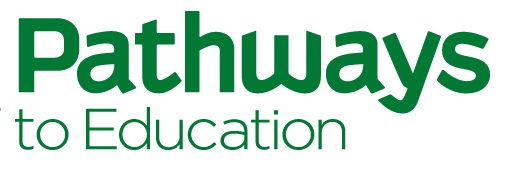Since the start of the COVID-19 pandemic, young people across Canada have lived with uncertainty and stress. Going to school has been transformed from an interactive and personally engaging developmental experience to a draining experiment in remote or hybrid learning. While extensive impact studies are still forthcoming, we already know that this experiment has been costly. Headlines on lost learning, declining mental health, and future labour market volatility proliferate. The pandemic has increased the distance between young people and their aspirations. Without appropriate supports, youth living in low-income communities will find this distance particularly difficult to bridge.
International and Canadian data demonstrate that COVID-19 has significantly impacted young people’s academic development. An international survey of teachers from several high-income countries, including Canada, has found that the disruptions of 2020 have delayed student progress by up to six months, with even higher losses in mathematics. The impact on education has also revealed persistent inequities: by the end of the current school year, young people living in low-income, single-parent, newcomer, or racialized families could find themselves up to 12 months behind, compared to up to 8 for their middle class peers.
Learning loss is only part of the challenge—the pandemic has also impacted mental health and positive youth development. Young people lost peer socialization opportunities and suffered from greatly reduced physical activity and informal relationship-building interactions with teachers. These activities are critical to positive social and emotional development and serve as protective factors in adolescent mental health.
A study of Quebec youth revealed that while isolation offered a reprieve from school and peer pressures, it also increased maladaptive coping strategies and levels of depressive symptoms, including feelings of worthlessness and a negative outlook on the future. According to UNICEF Canada, young people are now acutely aware of their psychological well-being needs: they would like to see mental health supports offered in their schools after the pandemic, along with additional academic supports or accommodations and help with planning for the future.
Their concerns about future prospects are well supported by Canadian employment data. Last year, over the course of only 4 months, the youth unemployment rate rose significantly by almost 20 percentage points. While employment has since rebounded slightly, it was mostly in part-time work, with full-time youth employment staying below pre-pandemic levels. The rate of young people not in education, employment, or training (NEET) soared to as high as 24 per cent in April of 2020 — the highest recorded rate in decades. Furthermore, high levels of youth who are NEET concentrate in under-resourced communities, demonstrating that those already impacted by low-income and inequity are much more likely to find themselves disengaged from education and unprepared for employment.
The learning setbacks and limited future prospects are worrying to all, but easier to overcome for youth who have university-educated parents with stable incomes, extensive social capital, and resources to support remedial or accelerated learning, prepare for future volatile labour market trends, or support mental health needs.
Students living in contexts of socioeconomic disadvantage do not have these supports and have had a particularly trying year. Many did not have a quiet place to study, appropriate devices, or reliable internet connectivity. Many faced the daily stress of having their parents leave the safety of their home to commute to work on public transit and risk exposure. Some had to keep their part-time jobs to help support their families. As they did their best to cope, the gap separating them from their future aspirations continued to increase.
How do we support them in closing that gap? When most of what young people hear around them every day is focused on disruption, loss, and uncertainty, we must strive to provide connection and affirmation. This approach buffers against adversity, builds competencies, and allows young people the space to focus on becoming their successful future selves.
Connection and affirmation are deeply embedded in the Pathways to Education wrap-around approach: high-quality mentoring and a culture of high expectations offer an environment where students can tap into their innate skills and ambitions, receive academic support, focus on goal-setting, and plan for the future. The program is tailored to individual needs and fosters self-regulation and the growth mindset. Research shows that it works not only in overcoming barriers to high school graduation, but also in helping youth realize their potential.

Konrad Glogowski, Ph.D.
Director, Research and Evaluation
Pathways to Education Canada
As the Director of Research and Evaluation, Konrad is a champion for our commitment to excellence through evidence. He leads a team who systematically and rigorously gathers relevant data to monitor and measure our program’s performance and overall impact. He is also responsible for implementing our national research and knowledge mobilization strategy, including research to help us better understand educational attainment and youth well-being programs and approaches, both at home and abroad. Konrad holds a Ph.D. degree in education from the Ontario Institute for Studies in Education of the University of Toronto, with a focus on adolescent development and learning.
